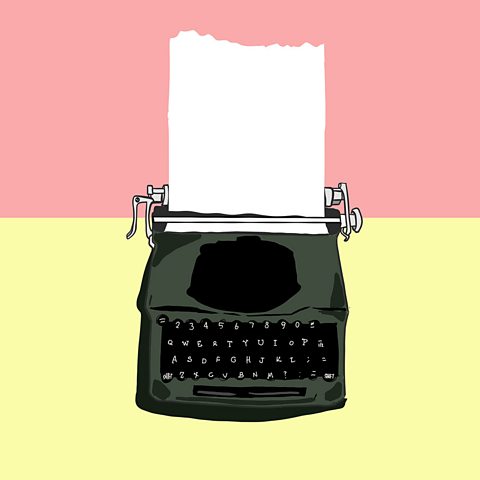What is a cover letter?

So you've written a perfectly polished CV and are ready to start sending it out to potential employers. If you want to stand out from the crowd, you can add a personalised cover letter that explains your skills and shows your interest.
Most jobs that ask you to apply with a CV will expect a cover letter but this isn't just a box to tick. It's your chance to speak directly to the employer and explain why you want to work there and why they should hire you.
In this cover letter toolkit, we'll take you through everything you need to know to secure that interview and make your skills sing.

How to write a cover letter
A cover letter is a short letter that accompanies your CV. It introduces you and explains why youÔÇÖre applying. It's your first impression, so take the time to make it a good one.
The cover letter is a great chance to personalise your application, explain your skills and let the employer know that youÔÇÖre keen.
Your cover letter could include:
- Your contact details
- Name
- Location (not full address)
- Phone number
- E-mail address
- If you're applying by mail, include the employer's address in the top left of the page.
- The role youÔÇÖre applying for and where you found it
- An outline of who you are and your experience
- Why youÔÇÖre looking for a new role
- Relevant achievements
- Why youÔÇÖre interested in this role
- A conclusion.
If youÔÇÖre applying online, you can write it in the body of the e-mail, but you should also attach it along with your CV.
Who is it for?
A cover letter is written specifically for the job you're applying for. You can't just write one up and change the name each time. It'll be obvious if you do, and you'll be missing the opportunity to personalise the application.
That being said, if you're applying for jobs in a similar field then make a note of the skills you're mentioning and how you're highlighting them. That's likely to be useful to you in other cover letters.
You should try to address your cover letter to the right person in the organisation. This might be a manager or the hiring manager in a larger company. This may be on the job advertisement but, if it isn't, try to find it on the company website. Use their preferred title (Mr, Mrs, Dr, etc).
If you can't find the right name then you can simply put "Dear Sir or Madam". If you managed to find their name then end your letter "Yours sincerely", if you didn't then use "Yours faithfully".
Do your research

You'll want to show the reader that you really want the position. You don't want them to feel like just another application you're sending off.
ItÔÇÖs a good idea to research the company and what theyÔÇÖre looking for. You can then take what you learn and tailor your cover letter to them. There's a number of ways to go about this.
- If the role has a job posting, then read it carefully
- What skills and responsibilities do they mention?
- What experiences do you have that show youÔÇÖre what theyÔÇÖre looking for?
- Go to the companyÔÇÖs website or social media platforms. This can give you a good idea of their values and vibes
- Ask yourself why you're a good fit to join their team?
- Are there any recent news items about the company or the field? Show that youÔÇÖre engaged and interested?
- Do you know anyone who works where youÔÇÖre applying, or in a similar place? Can they give you any advice on how to present yourself?
The more you know about the place you're applying for, the better. It will improve your cover letter and ensure that you're not just talking about yourself, but speaking directly to the employer. It will also make you more comfortable speaking off the cuff if you make it to the interview stage.

The STAR method
The most important thing to do in your cover letter is to demonstrate that you have the relevant skills for the job you're applying for. If you've researched well, you should have a good idea of what the potential employer is looking for. The hard skills that are required for the job. The soft skills that will put you ahead of the pack.
If you know you've got the skills, all you need to do is show it.
Show don't tell.

Anybody can write "trustworthiness" or "adaptability" in their cover letter. To really grab the readers attention, you need to show not tell. That means you need to communicate concrete examples from your life, school or work where you've demonstrated the skill you're highlighting.
How do you do this? By using the STAR method.
Situation ÔÇô the situation you were in/dealing with
Task ÔÇô what you needed to get done
Action ÔÇô the action you took to get the task done
Result ÔÇô what happened as a result of your actions and the skills you learnt or demonstrated.
By taking an example of a time when you've demonstrated a skill, and breaking the experience up into these four steps, you create an engaging anecdote that shows the reader exactly what they need to know. It will also make your application more attractive, personal and memorable.
So rather than just saying "I use my initiative" you can show that you do with an example like this.
Situation: "At school I noticed that lots of students were littering when there wasn't a bin in sight, but that people would use the bins if they could see them."
Task: "I realised that if people had reminders in the places where there weren't bins then they might walk out of their way to use them."
Action: "I took it on myself to make up some signs directing people to the bins, and asked my teacher if I could put them up."
Result: "We noticed a change straight away. Students would look around for a bin and, instead of not seeing any and dropping their rubbish, they would see a sign and walk a little way to the bin. There was less littering across the whole school."
This method can also be used if you're offered an interview. It can be a useful guideline if you find that you're nervous and want to make sure you cover everything.
Check out this article on the STAR method to see it applied to various different skills.

Example cover letter
Let's look at all this in action.
You can apply this advice to any cover letter, whether you're applying to be a barber, barista or brain surgeon.
Say you were applying to an iconic chocolate factory. Let's see what the cover letter might look like.

Challenge: Write a fictional cover letter
LetÔÇÖs put some of this into practice. Think about something youÔÇÖd love to do for a living and be as ambitious or outlandish as possible.
Maybe itÔÇÖs a teaching position at your favourite fictional wizarding school. Maybe itÔÇÖs getting the last oar on a viking expedition. Maybe itÔÇÖs something less fantastical like getting a job at your favourite local clothes shop. It can be whatever you like.
Now, write a cover letter reaching out to whoever could give you that job. Hit all the sections outlined in the toolkit and use the STAR method to give an example of a relevant skill.
Include:
- The role youÔÇÖre applying for and where you found it
- An outline of who you are and your experience
- Why youÔÇÖre looking for a new role
- Relevant achievements
- Why youÔÇÖre interested in this role
- A snappy conclusion.
Writing your cover letter
It can feel overwhelming to write a direct letter like this, and sometimes people struggle to ÔÇÿsellÔÇÖ themselves. It can feel a lot easier when you remember exactly what a cover letter is for. The purpose of this part of the application is to get an interview.
The person reading the letter is not there to catch you out. TheyÔÇÖre just looking for a candidate that will be a great fit for the role theyÔÇÖre advertising.
They want to find someone, and your cover letter is simply a chance to explain why that might be you.
Final checks

If you've written your cover letter, answer these questions to make sure it's as good as it can be before hitting send.
Have you
- Addressed it to the right person?
- Introduced yourself and told them why you're applying?
- Highlighted a few of your skills using the STAR method?
- Shown that you understand their organisation?
- Included your contact details?
- Asked someone you trust to check your grammar and spelling?
If the answer to all this is yes, then it sounds like it's in good shape. In the simplest terms, if your cover letter shows that you have the skills to do the job and implies that you'll add something to their team then it's doing its job.

You've completed the Bitesize cover letter toolkit!

Congratulations! You're ready to write great cover letters to accompany your CV. Remember that you'll be writing a new one for every application but can be reusing the skills and examples that you learn to talk about.
Add this toolkit to your My Bitesize and return to it when you're applying for work to double check any of the guidance and to use the final checklist. You can go back to any section any time you like but here's some quick links to the cover letter basics, our templates and the STAR method.
Now that your cover letters are tip top, is your CV looking a little lacklustre?
Head over to our CV toolkit for the best practice and some top tips for writing an eye-catching CV.
If your cracking cover letter gets your foot in the door then check out this video on how to prepare for an interview.

Explore more about the world of work with Bitesize Careers.
Five questions to ask yourself to find your future job. videoFive questions to ask yourself to find your future job
Career coach, Mark Anderson, gives advice on what to think about when considering your future job options.

Top application and interview tips. videoTop application and interview tips
The Mind Set coaches offer their interview advice.

Career toolkit: How do I write a great CV?
Everything you need to know to write an engaging CV and land your dream job.
